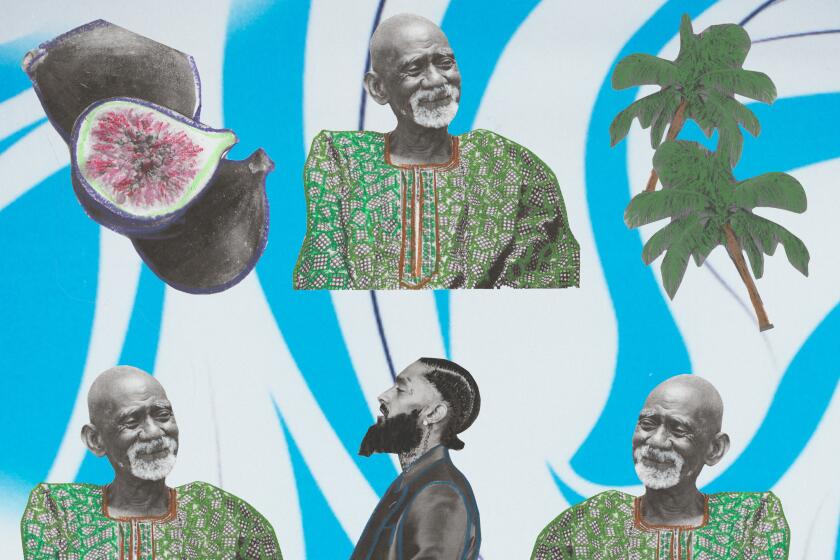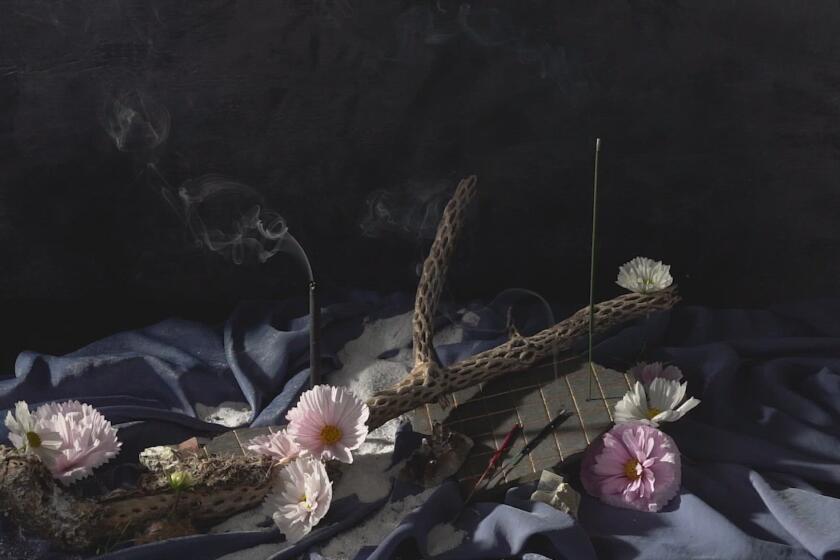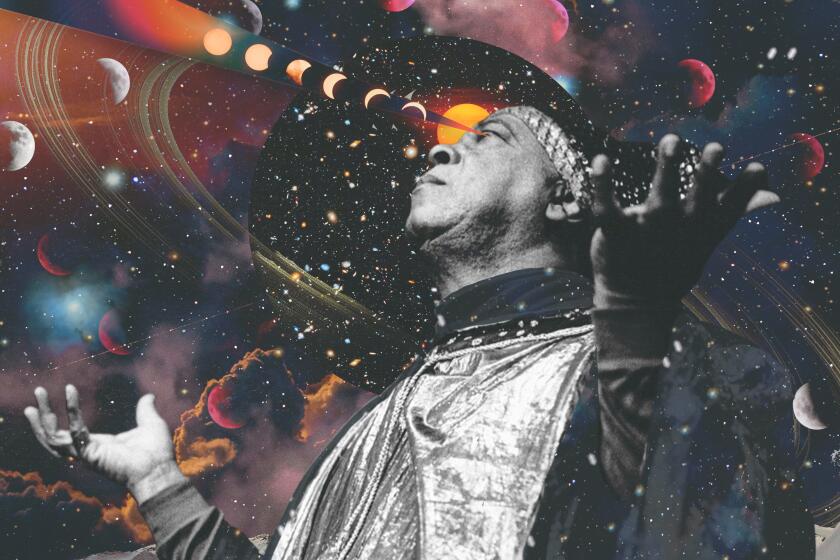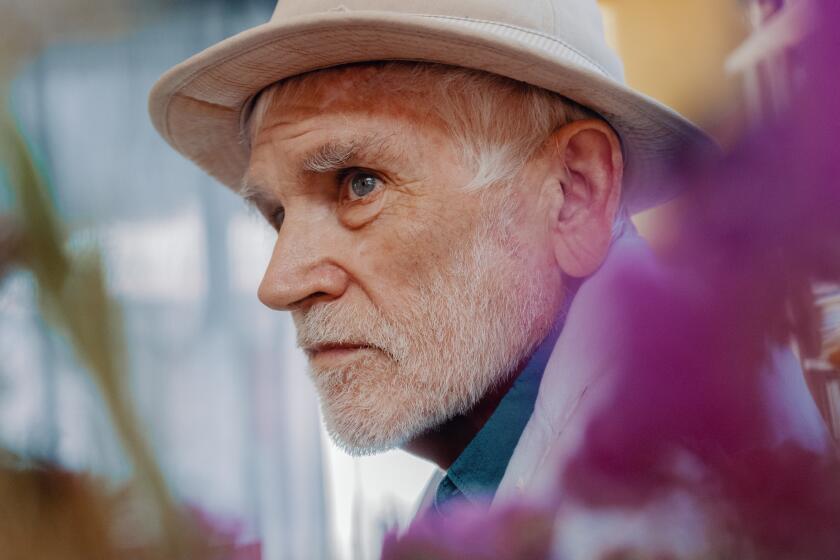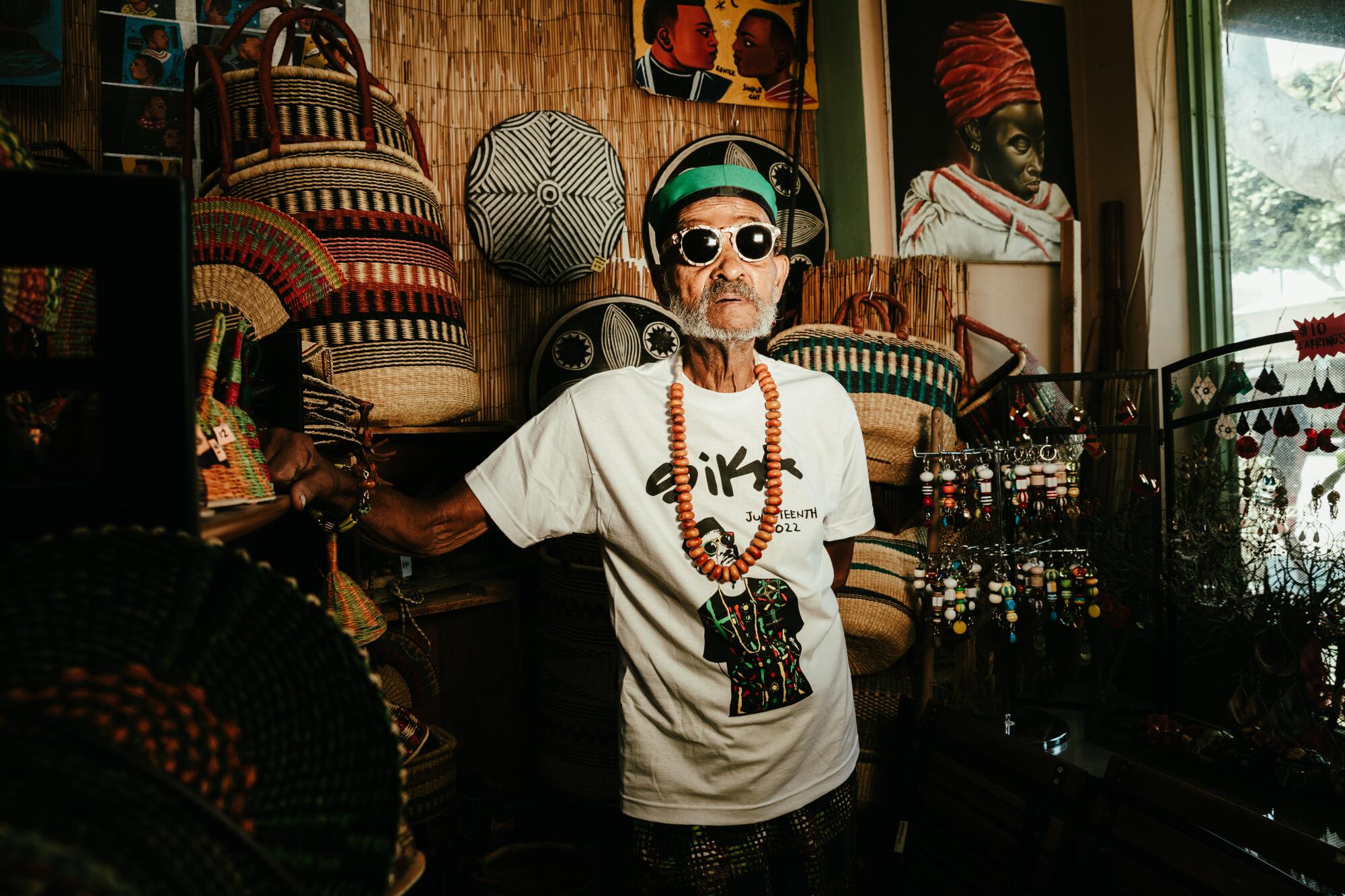
This story is part of Image issue 12, “Commitment (The Woo Woo Issue),” where we explore why Los Angeles is the land of true believers. Read the whole issue here.)
On this morning, it was suspiciously easy. Sika Dwimfo, better known by his monomial Sika, is sitting in his 30-year-old shop on Degnan Boulevard. He’s surrounded by African masks, Ghanaian fans, handcrafted jewelry, waist beads and burning incense. Large pieces of art from different parts of the world adorn each wall. This is a place layered with as much history, color and contrast as the fit Sika has on right now. On any given day, curating the right look can take him up to two hours — sometimes he’ll go through 10 outfit changes before it feels right. But again, today wasn’t one of those days. Sika woke up with a vision, which became more fully realized with each piece he picked up from his massive collection.
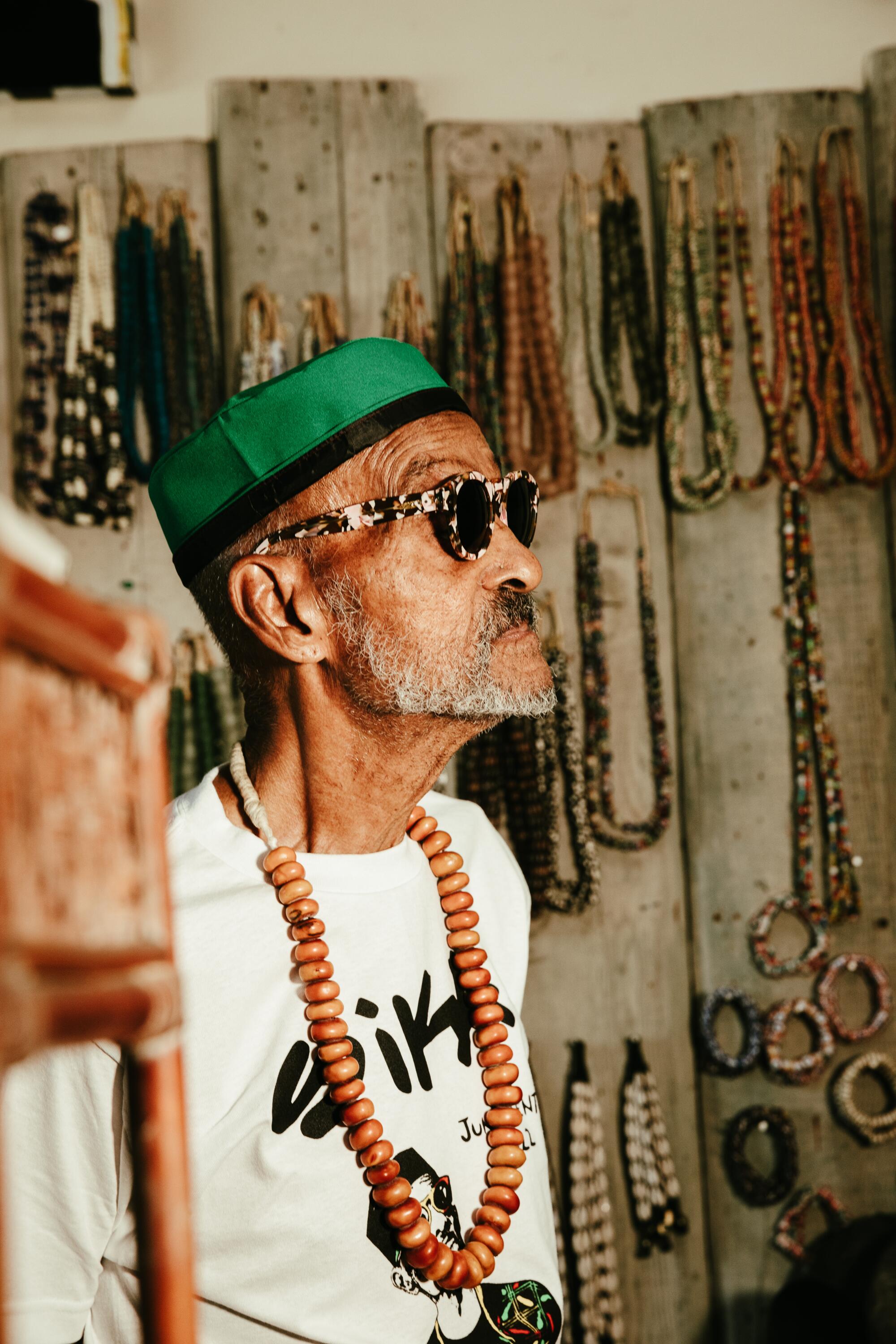
A quick rundown is in order: First, the shorts. Purple and gold African print. Then the tee, a Lakers joint that might raise eyebrows for anyone aware of Sika’s infamous Clippers allegiance. (This was a Kobe dedication, so it transcended all that, he explains.) The kufi hat was purchased from Taj Mahal Imports on Crenshaw, sporting a color scheme and print that both played off of and contrasted the shorts and shirt. The shoes: buttery ocher leather slip-ons from Morocco. The eyewear? Always the Lennon-esque sunglasses. (This particular pair was purchased in Chinatown for a couple bucks.) His long gold necklaces, with pendants in the shape of an African mask and a bicycle handmade by him, are rarely taken off.
Sika has perfected the art of the general uniform. His brilliant juxtapositions of texture, color and material function as a style syllabus for people he encounters — both those who have come to know him and community passersby. His daily outfits are remarkably consistent, but the energy shifts depending on his mood. He’s been known to leave the house in one thing and come back to change because the vibe is off.
For the 81-year-old artist, master jeweler, business owner and “Godfather of Leimert Park,” dressing is the highest expression of self. “I like to dress, I like to look nice,” says Sika. “Now that I’m older, I figure it enhances me. I have to put on something that makes me energetic.”
Sika was born in New Orleans and raised in Chicago. His mother was a tailor who made her son custom suits, which cemented his love for bespoke pieces and individuality in clothing early on. He came of age as an artist in a time and place that was coursing with jazz, art and poetry, and Sika was at the center of it all. He owned a Chicago art gallery in his late 20s, befriending people such as Haki R. Madhubuti and Gwendolyn Brooks. It was Madhubuti and Brooks, Sika says, who put together $700 for him to secure the space in the first place.
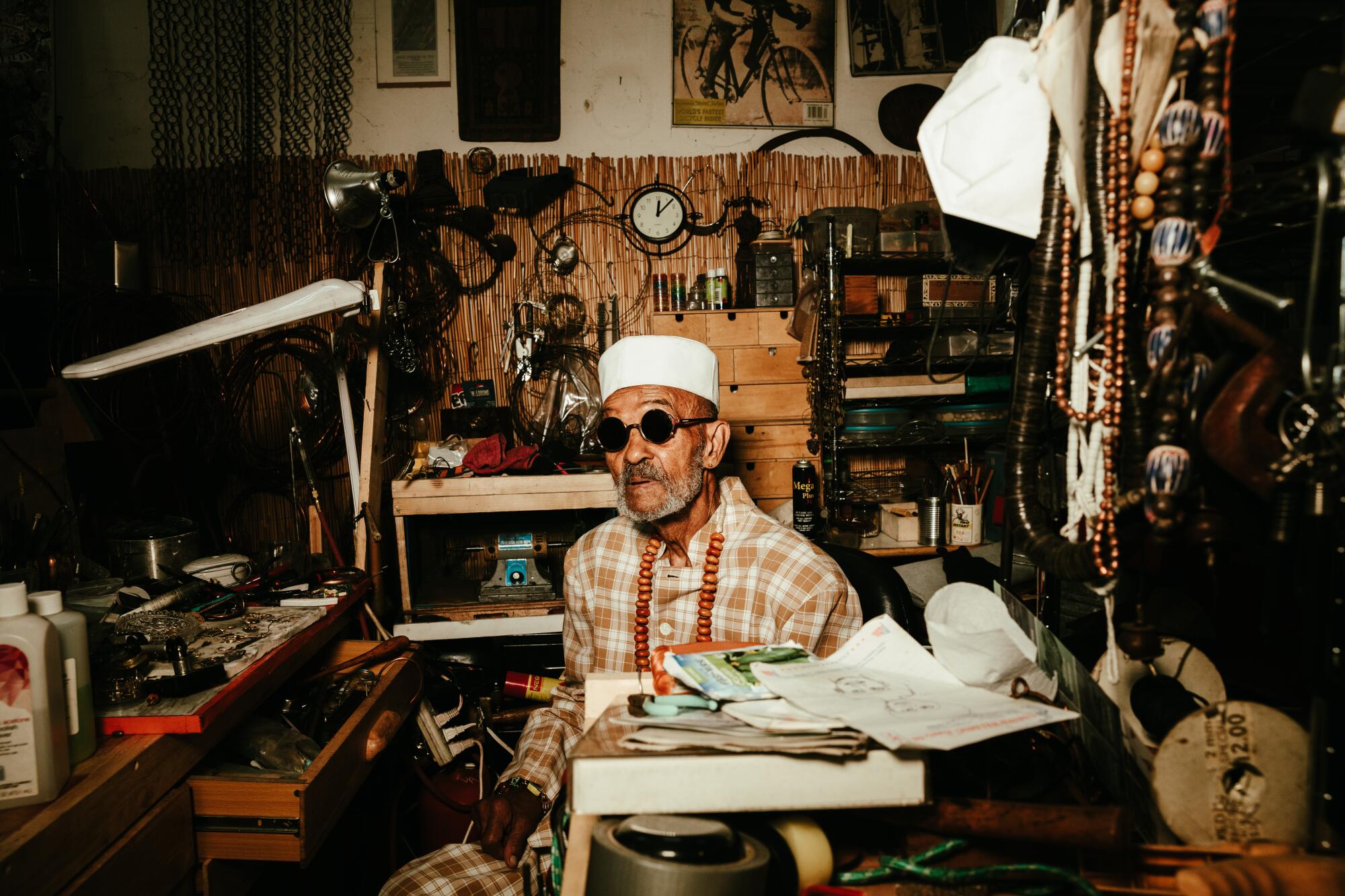
But the winters were harsh. And at the time, one of his play sisters was dating Fred Hampton and would frequently visit California to be with him during his time here. (There exists an iconic picture of young Sika, small afro haloing around his head, in conversation with Hampton at one of his jewelry exhibitions.) Sika would hear all about this place — the sun, the energy.
He was searching for a home that exhibited the freedom that already existed within him. And he kept hearing that L.A. was the kind of city where people would walk around without shirts on. Sika, always the free spirit, thought, “I’m into that.” He came to L.A. in 1971, at 31 years old. It was his first time on an airplane.
The controversial healer was seen, in so many communities in L.A., as an underdog hero; the mythic figure The Man didn’t want you to know about. People saw him as a champion of the truth, or a truth.
“I had special suits that my mother used to make for me, but when I moved out here, I had nothing but Dr. Scholl’s sandals, shorts and T-shirts,” he says. He was staying in a five-bedroom mansion in the West Adams Historic District with roommates; his rent was $140 a month. “I got here and that was it,” Sika says. There was no going back.
Since 1992, Sika’s has been a colorful mainstay on Degnan Boulevard. A person could spend hours sifting through the racks of dashikis, beaded necklaces, Ghanaian baskets and Mali mudcloth. It started as a jewelry shop, with so much jewelry — all made by Sika — that it could fill the walls. But now it has a little bit of everything, and with Sika at the center, it’s become a cultural landmark.
On a sleepy Tuesday afternoon, three people from the neighborhood came in within a span of 30 minutes just to say hello. Andrea Daughtry, who runs the local nonprofit For the Fem in You, came in to pick up a pair of earrings and chat with Sika. “For me, he’s like a grandfather I never had,” Daughtry says. “When I started coming to Leimert, he’s the only individual that looked out for me from Day One. He does this for a lot of people. We look up to him for wisdom and guidance and history — he is the epitome of Black history for Leimert.”
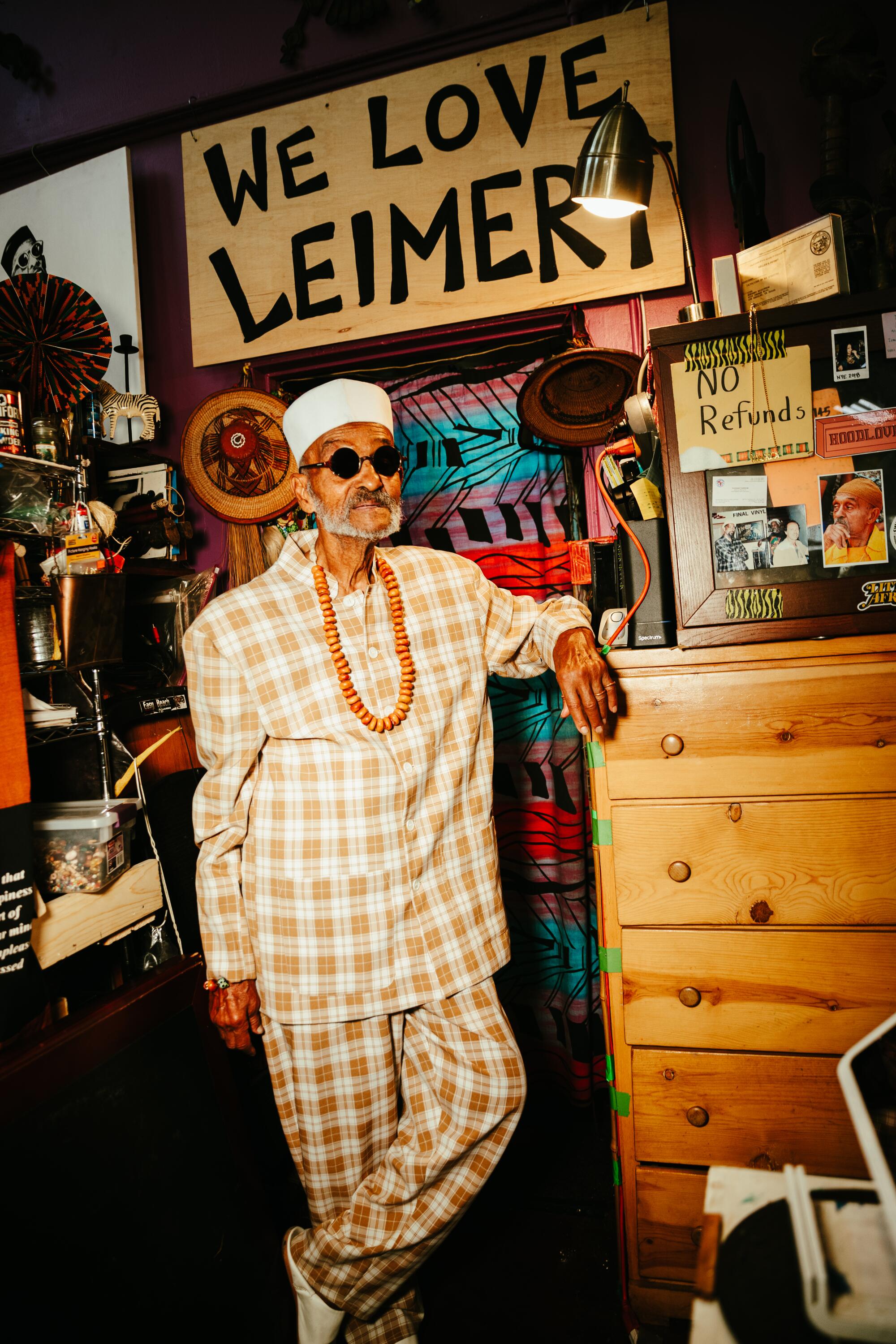
When it comes to his looks, the community expects nothing less than a daily show. “We know he’s not about to play with you,” Daughtry says of Sika’s style. “He’s giving vibrant colors. He loves to stand out. He’s going to have a hat, shoes to match. His jewelry is going to be on, and you’re going to see those sunglasses. That’s his look.”
Sika is soft-spoken and observant. A December Capricorn, his presence is commanding, but not in an obvious or obnoxious way. His energy speaks first, then a witty remark will take you by surprise, like when he playfully quips at his daughter Milan Dwimfo that “she’s a hater” for pointing out the wrinkles on his T-shirt. He’s the type of person who, when he talks, people lean in to listen. Something important is about to be said.
Dwimfo, who now runs Sika’s along with her own jewelry company, Queen Midas Gold, says that her dad has always been unique — in his ways of both dressing and moving through the world. “He’s just a different kind of person,” she says. “When I was a kid, my friends would always want to come to my house because our house was different. I went to Crescent Heights [Boulevard Elementary School], and all the kids would have Kool-Aid pouches and Capri Suns. We weren’t allowed to have that. But my dad was so cute — he would make me these little avocado sandwiches, or a little homemade salad with edible flowers, and always make me a fresh smoothie or juice to take to school. He would pick me up in his Volkswagen van that had African print on it.”
The sacred ritual not just about lighting a stick and perfuming your home. It’s about the energy behind it.
You see photos of Sika in his youth and it’s clear that he’s always had this strong sense of self. There’s an image taken of him in 1977 at Festac, the legendary African arts and culture festival in Nigeria, in a muscle tee, layers of jewelry and a woven beanie, with a Canon camera in his hand. It’s dynamic and striking. Sika, then 37, glowed.
“When I was young and would dress up, my buddies used to tell me, ‘Man, you really look good in your clothes. You have something, something different.’ Now as I’ve gotten older, I feel like that if I had listened to them, I might have been a model. I feel like a model [now].”
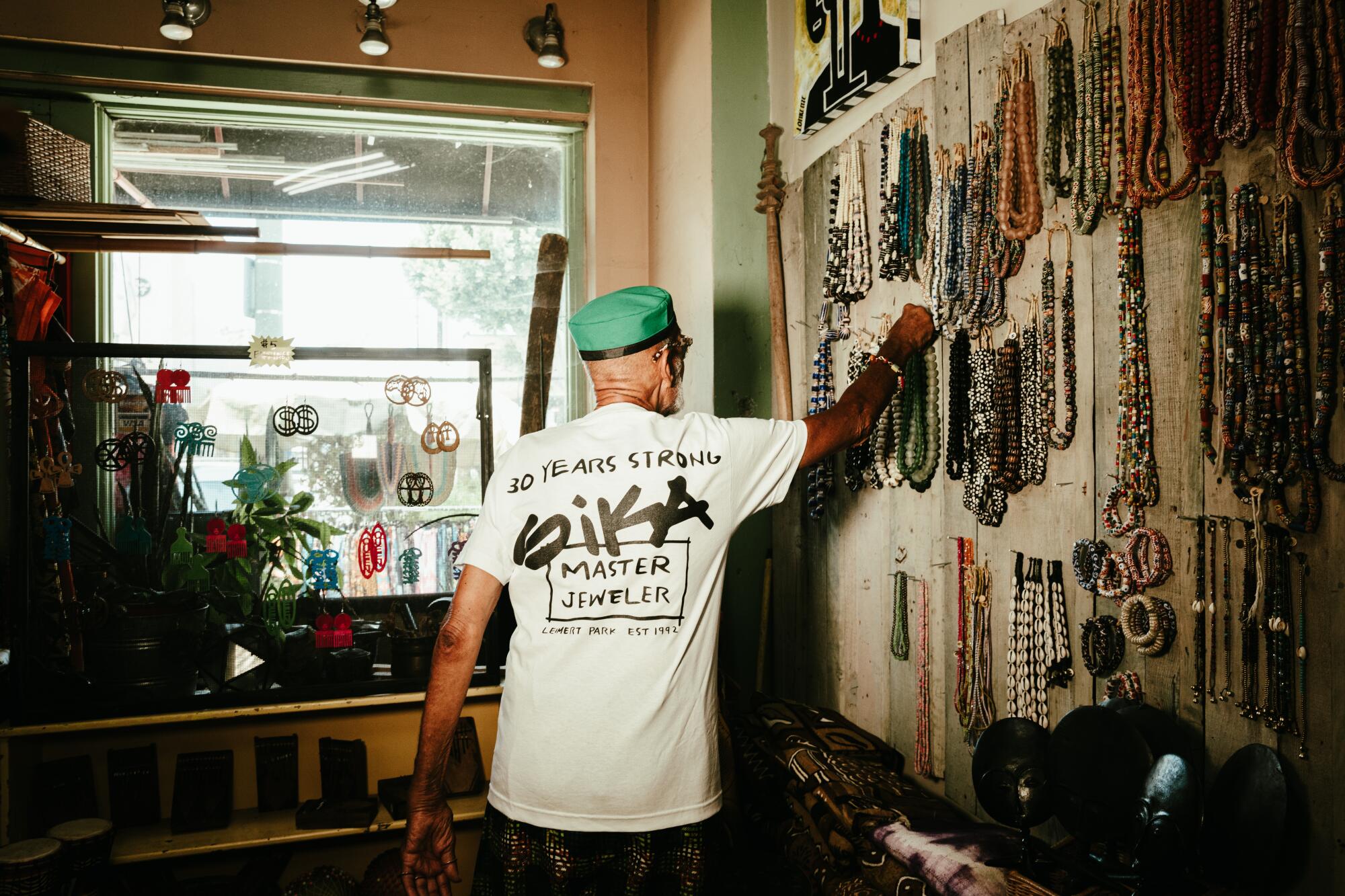
Indeed, Sika has modeled for campaigns by Union and Mastercard alongside Dwimfo. With age, he’s also grown more comfortable with prints and color instead of sticking to neutrals like he did in his youth.
For Sika, style has become an avenue to achieve his most idealized self. It goes hand in hand with his spiritual practice, which he’s been perfecting his whole life. Sika’s multipronged spiritual practice includes humility. Giving is another of its pillars — he’s organizing his closet in preparation to give away some of his pieces to people he knows will appreciate them. He’s a longtime cyclist and is manifesting getting back on his bike again (Sika used to ride up to 150 miles at a time, and still nods at this lifestyle with the cycling caps he often wears). He prays, for things like peace, prosperity and abundance — for others more than for himself. He’s been mostly plant-based for decades and has done up to 50-day juice fasts. Dwimfo says he’s changed people’s lives through showing them the possibilities of a more vegan or vegetarian lifestyle. “I live a very simple life,” says Sika. “I just try and do right as much as I possibly can.”
Sika derives a certain energy from finding harmony through clothing. Take his mixing of prints. When Sika mixes prints in a way that hits just right, he says it almost feels like he can “run down a flight of stairs.” Where someone else might not be nuanced or brave enough to put two contrasting prints together, Sika figures out a way. (It always, always works.) He also likes contrasting cultural pieces with streetwear. He’s currently obsessed with Converse Chuck 70s — nine pairs and counting — that he gets from Neighbors Skate Shop.
You cannot beg a god for forgiveness, but you can be ready when he hints at offering it after a long standoff.
“It’s such a combination,” says Dwimfo of her dad’s knack for mixing designs and styles. “It’s such a mesh of the African stuff — just unique prints in the way that he does it. The way he connects it all.”
The same goes for his jewelry. “That’s my love,” Sika says. “There’s something energetic about it, and I don’t feel right if I don’t have it. I’ll go back upstairs, and if I can’t find it, oh, I almost have a fit.” Sika adopted jewelry as his medium when he was still in Chicago and became well known for his unique wire pieces. (In the ’60s, after a Nina Simone concert, he went backstage to give her a pair of earrings he’d made. “We became very good friends,” he says.)
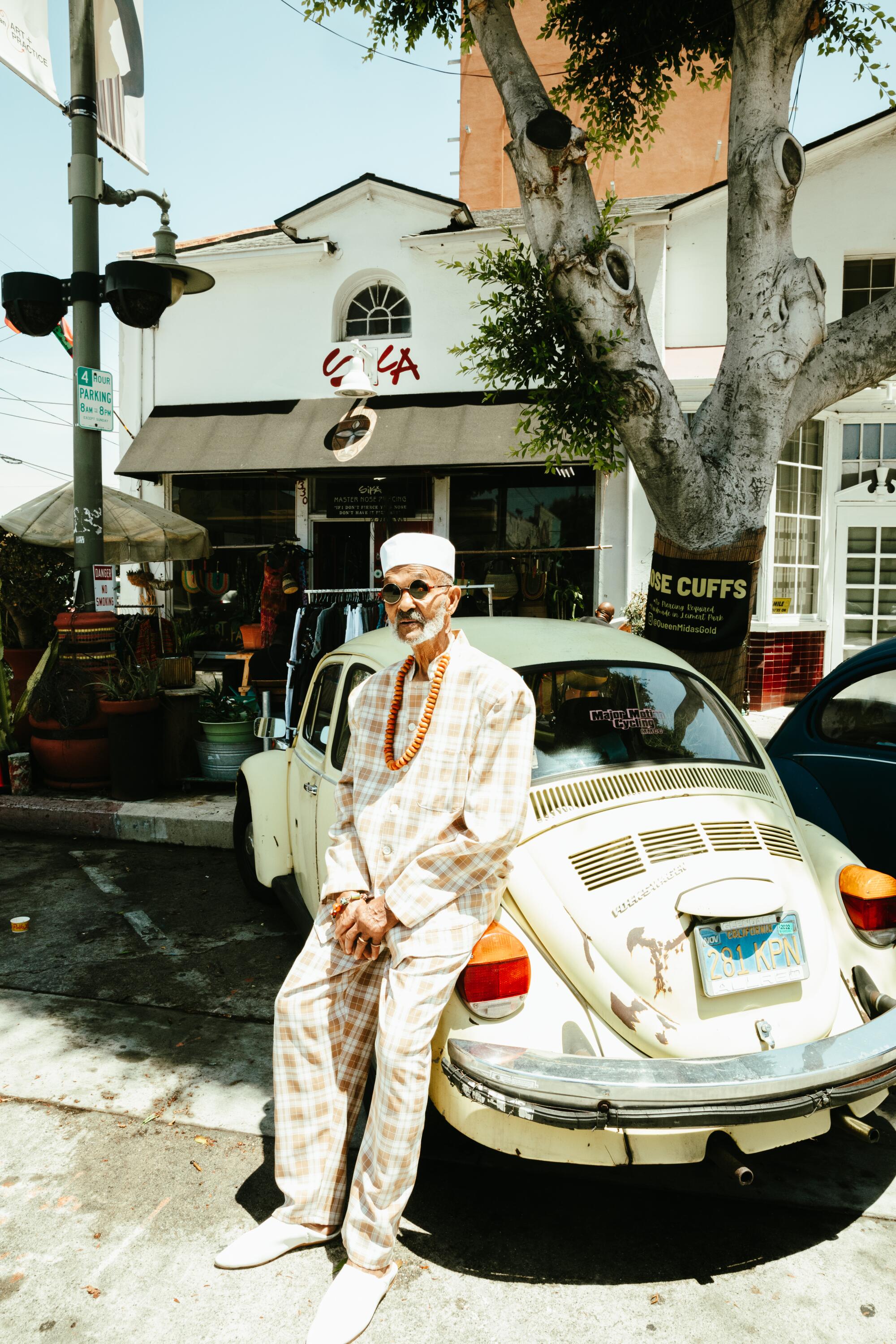
Sika understands something important about personal style that only the truly stylish have figured out: It’s a culmination of all your identities and experiences, expressed in a way that is referential to all the places you’ve been but pushes you forward into the person you want to become. It radiates from within.
“When I wake up in the morning, it’s about how I feel about what I want to wear — what I feel comfortable wearing that day,” he says. “Whatever I have to put on, it has to be something that fits. And gives me some energy.”
More stories from Image
